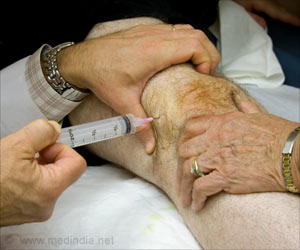Highlights
- Trochlear dysplasia is the most common and recurrent type of kneecap or patellar instability.
- Medial patellofemoral ligament (MPFL) is found to be effective for people with trochlear dysplasia.
- MPFL is the least invasive surgery that improves the stability of the knee, protects the joint from additional damage and leads to a high rate of return to sport.
However, it was previously unknown if this procedure is effective for people with trochlear dysplasia.
The medial patellofemoral ligament attaches the inside part of the kneecap or patella to the long bone of the thigh called the femur.
Injury to the medial patellofemoral ligament can occur when the patella dislocates odue to trauma experienced during athletics or an accident. People with these injuries are described as having patellar instability.
Patellar instability affects young and active, mostly females in their 20's. Its prevalence is 6-77 per 100,000 population.
MPFL Reconstructions for Trochlear Dysplasia
The study sought to determine if isolated MPFL reconstructions work for patients with trochlear dysplasia, preventing them from going through more complicated bony procedures.
The retrospective analysis reviewed 105 patients who underwent MPFL reconstructions with Beth E. Shubin Stein, MD, sports medicine surgeon at HSS, with a 10 year follow up.
The results showed a high patient outcomes scores and a high rate of return to sports at one year (89% of those who participated in sports preoperatively).
There was a 97% success rate; only 3 patients reported a postoperative dislocation.
"As surgeons, we like to do the least invasive surgery possible to fully fix the problem," said Dr. Shubin Stein, lead investigator. "With this study, we found that MPFL reconstruction is a safe and effective treatment for patients with patellofemoral instability even if in patients that have trochlear dysplasia."
To regain patellar stability, surgeons can perform a tibial tubercle osteotomy or trochleaplasty (both bony procedures), in addition to MPFL reconstructions.
Together, both soft tissues and bony procedures maintain patellofemoral stability together.
"Equally as important, we showed that this technique can be done in patients who might previously be advised to undergo a bony procedure such as tibial tubercle osteotomy or trochleoplasty, which can be high risk surgeries," added Dr. Shubin Stein.
The new study from Hospital for Special Surgery (HSS), was shared at the annual meeting of the American Academy of Orthopaedic Surgeons (AAOS).
References
- Patellar instability - (https://radiopaedia.org/articles/patellar-instability)
- Medial Patellofemoral Ligament (MPFL) Reconstruction - (https://www.hss.edu/conditions_medial-patellofemoral-ligament-reconstruction-mpfl.asp)
Source-Medindia











